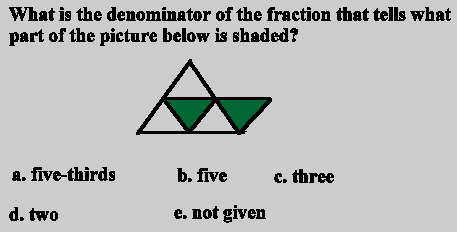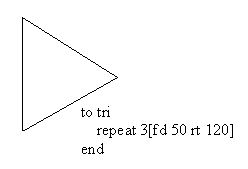instructional software design project
I submitted the following article to the Australian Maths Teacher Journal in 1994 but it was rejected for publication. The note I received back said that my students hadn't really achieved much learning in Fractions.
I still think this was a very worthwhile Project and that the reviewer didn't take into account all of the meta-learning that happened. The approach used is still relevant today but it does require a high skill level for the teacher in a variety of areas - programming skills and managing a complex learning environment.
The article also includes a comprehensive explanation of the "instructional software design project" approach which was pioneered by Idit Harel and Seymour Papert and which still draws positive reviews today.
Anyway, the era of paper journals is over. I can publish what I want. You, the reader can ignore, critique or praise.

Education Software: Designed by Kids, for Kids
- link to full article written by Bill Kerr in 1994
Abstract
Students at the Year 8 level used LogoWriter software to design computer screens to teach Year 3/4 students Fractions. Students were set the task of doing transformations between words, symbols and pictures using LogoWriter. They recorded their experiences in a journal and identified problems they encountered and solutions to those problems. They helped each other solve problems in Fractions, design and computer programming.
Outcomes from this learning sequence included expressive writing about mathematics, improved scores in a Fraction test, improved fluency in Logo programming, improved self management skills, increased cognitive resilience (overcoming frustration and not giving up), improved time management, and increased faith by the students in their own thinking patterns. Students remained motivated and interested in the Fractions topic for a 7 week block using this approach. The culture of mathematics was perceived by the students to be different and more interesting than traditional textbook maths. Some students dropped in at recess and lunch to work on their projects.
The final combined software product is a useful piece of educational software that can be utilised by other teachers for diagnostic purposes as well as being an exemplar of what can be achieved with LogoWriter when it is used in this way.

Conclusion
Teachers face the task everyday of how to make their subjects relevant and interesting to their students and this is seen to be a particular problem with maths. One way to look at this is from the point of view of objects to think with. The teacher and students co-construct a learning environment that is replete with "objects to think with". These "objects" include:
Harel and Papert (1990) argue that some materials are better with regard to the following criteria:
I still think this was a very worthwhile Project and that the reviewer didn't take into account all of the meta-learning that happened. The approach used is still relevant today but it does require a high skill level for the teacher in a variety of areas - programming skills and managing a complex learning environment.
The article also includes a comprehensive explanation of the "instructional software design project" approach which was pioneered by Idit Harel and Seymour Papert and which still draws positive reviews today.
Anyway, the era of paper journals is over. I can publish what I want. You, the reader can ignore, critique or praise.

Education Software: Designed by Kids, for Kids
- link to full article written by Bill Kerr in 1994
Abstract
Students at the Year 8 level used LogoWriter software to design computer screens to teach Year 3/4 students Fractions. Students were set the task of doing transformations between words, symbols and pictures using LogoWriter. They recorded their experiences in a journal and identified problems they encountered and solutions to those problems. They helped each other solve problems in Fractions, design and computer programming.
Outcomes from this learning sequence included expressive writing about mathematics, improved scores in a Fraction test, improved fluency in Logo programming, improved self management skills, increased cognitive resilience (overcoming frustration and not giving up), improved time management, and increased faith by the students in their own thinking patterns. Students remained motivated and interested in the Fractions topic for a 7 week block using this approach. The culture of mathematics was perceived by the students to be different and more interesting than traditional textbook maths. Some students dropped in at recess and lunch to work on their projects.
The final combined software product is a useful piece of educational software that can be utilised by other teachers for diagnostic purposes as well as being an exemplar of what can be achieved with LogoWriter when it is used in this way.

Conclusion
Teachers face the task everyday of how to make their subjects relevant and interesting to their students and this is seen to be a particular problem with maths. One way to look at this is from the point of view of objects to think with. The teacher and students co-construct a learning environment that is replete with "objects to think with". These "objects" include:
- The challenge of teaching others and designing screens for this purpose using Logowriter
- The structure of fractions and their transformations (words, symbols, pictures)
- Other students, eg. best friends, class experts, the Year 3/4 students
- Teacher (Is he/ she approachable, friendly and skilled?)
- Journal reflections
Harel and Papert (1990) argue that some materials are better with regard to the following criteria:
- appropriability (some things lend themselves better than others to being made one's own)
- evocativeness (some materials are more apt than others to precipitate personal thought)
- integration (some materials are better carriers of multiple meaning and multiple concepts)




0 Comments:
Post a Comment
<< Home